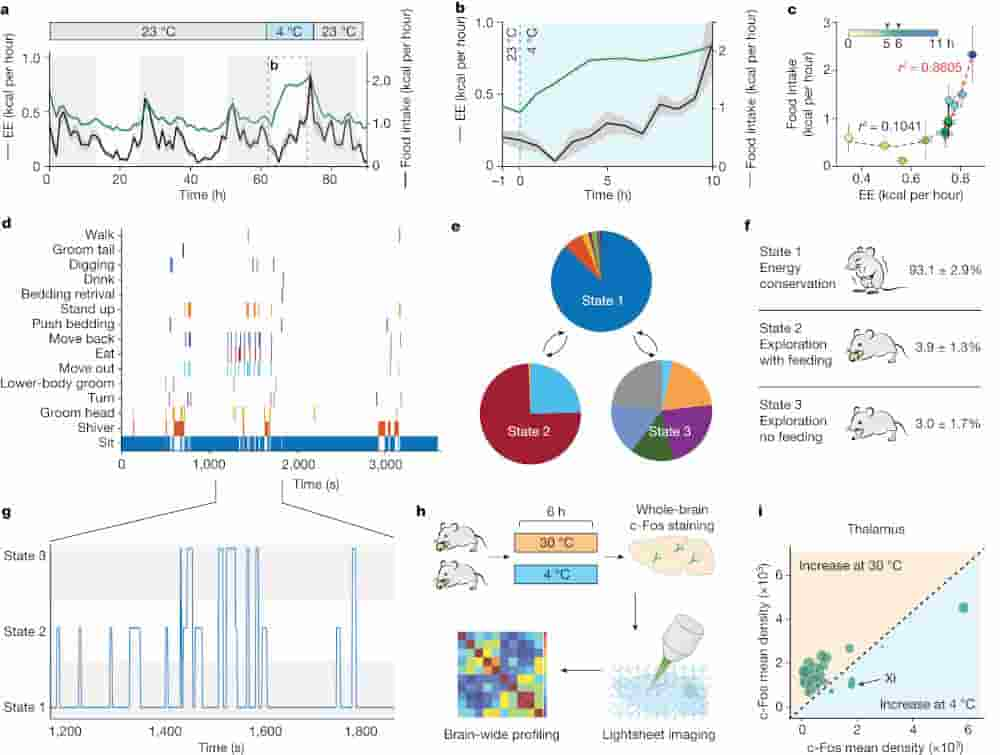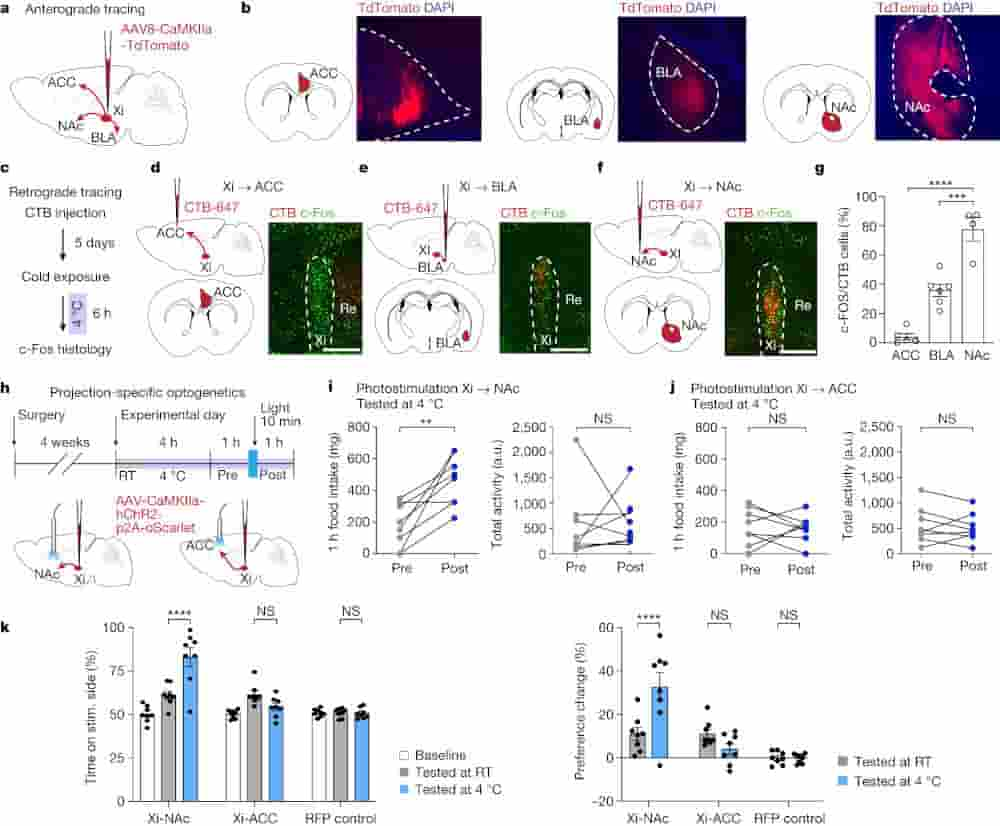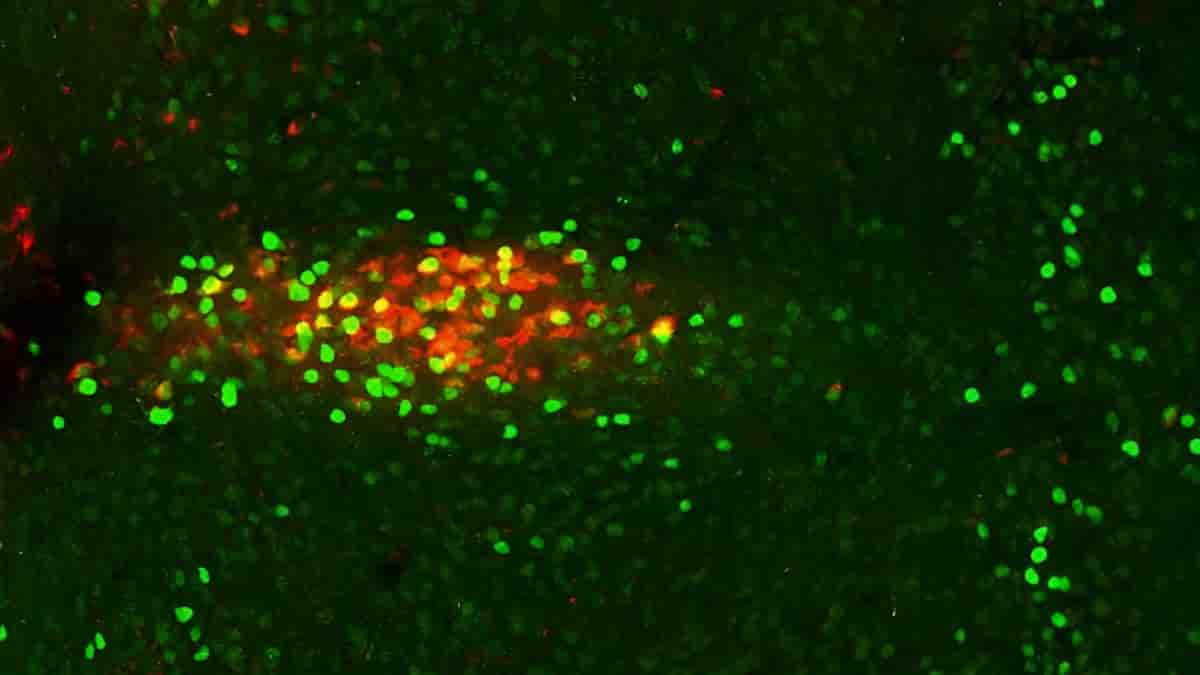The brain circuits that cause mammals to crave food more when exposed to cold temperatures have been identified by neuroscientists at the Scripps Research Institute. The finding could lead to new therapeutics for metabolic health and weight loss.
“This is a fundamental adaptive mechanism in mammals and targeting it with future treatments might allow the enhancement of the metabolic benefits of cold or other forms of fat burning,”
said study senior author Li Ye, Ph.D., associate professor at Scripps Research.
When exposed to cold, mammals automatically expend more energy to maintain a normal body temperature. Even though the exact mechanism governing this increase in energy expenditure caused by the cold was unknown, it also causes an increase in appetite and feeding.
Cold Therapy
The new study identified a cluster of neurons that act as a “switch” for this cold-related, food-seeking behaviour in mice.
Cold water immersion and other forms of “cold therapy” have been investigated as methods for losing weight and improving metabolic health because exposure to cold causes increased energy burning to stay warm.
The fact that humans’ evolved reactions to cold are not intended to result in weight loss is a disadvantage of cold therapies. It is an effect that could have been fatal during the frequent periods of food scarcity in pre-modern times.
In order to counteract any weight loss effect, the cold increases appetite just like dieting and exercise do. Ye and his colleagues sought to identify the brain circuitry that mediates this cold-induced appetite increase in the study.
Thalamus Activation

(b) Enlarged view of a during the switch from 23 to 4 °C. (c) Scatter plot representing the relationship between energy expenditure and feeding over an 11 h period post temperature switch.
(d–f) Behavioural analysis of animals undergoing cold-induced energy compensation (CIEC) using a hidden Markov model state (HMM). d. Representative behavioural events assessed for a male C57BL/6J mouse after being under cold conditions for 5 h. e. Representation of the HMM of CIEC-associated feeding (n = 3 mice). f. Percentage of time spent in each HMM state.
(g) Enlarged view from a 10 min session of e, showing HMM state assignment.
(h) Schematics of whole-brain clearing and volumetric three-dimensional imaging used to identify brain regions activated during CIEC.
(I) c-Fos mapping results for the thalamus. Each dot represents c-Fos+ cell count in each distinct region based on Allen Brain Atlas registration. Structures activated under thermoneutral temperature are shaded in orange and those activated under cold conditions in blue.
Credit: Lal, N.K., Le, P., Aggarwal, S. et al. Nature (2023). DOI: 10.1038/s41586-023-06430-9
One of their first observations was that when cold temperatures happen, mice increase their food-seeking after about six hours, indicating that this behavioural change is not simply a result of cold sensing.
Using whole-brain clearing and light sheet microscopy, the researchers compared the activity of neurons throughout the brain under cold versus warm conditions.
Soon after, they made a significant discovery: whereas the majority of neuronal activity across the brain was significantly reduced in the cold condition, portions of a region known as the thalamus displayed increased activation.
Xiphoid Nucleus Spike
The team eventually zeroed in on a specific cluster of neurons known as the xiphoid nucleus of the midline thalamus, demonstrating that activity in these neurons spiked under cold conditions just before the mice awoke from their cold-induced torpor to search for food.
When there was less food available at the onset of the cold condition, the activity increase in the xiphoid nucleus was even greater, suggesting that these neurons respond to a cold-induced energy deficit rather than to cold itself.
When the researchers used optogenetics to stimulate these neurons, the mice increased their food-seeking behaviour but not their other activities. Similarly, when the researchers inhibited the activity of these neurons, the mice reduced their food-seeking behaviour.
These effects were only observed under cold conditions, indicating that cold temperatures provide a separate signal that must be present for appetite changes to occur.
Nucleus Accumbens Projections

(c–f) Schematic (c) and representative overlay images between retrograde CTB and c-Fos signals at the Xi: ACC-Xi (d), BLA-Xi (e) and Xi-NAc (f). Scale bars, 200 μm.
(g) Quantification of CTB/c-Fos overlap. n = 5 for ACC, n = 6 for BLA and n = 4 for NAc.
(h) Schematic of projection-specific optogenetics experiments.
(i,j) Quantification of change in food intake and physical activity following stimulation of Xi-NAc (i) and Xi-ACC (j) projection during cold-induced energy compensation (n = 8 mice).
(k,l) Projection-specific real-time place preference test. Red fluorescent protein control was injected in the Xi and stimulated at the Xi to control for all projections (n = 8 mice). k, Percentage of time spent on laser stimulation side. l, Percentage change in preference following stimulation, normalized to baseline place preference for the same animal.
Credit: Lal, N.K., Le, P., Aggarwal, S. et al. Nature (2023). DOI: 10.1038/s41586-023-06430-9
In a final series of experiments, the team demonstrated that these xiphoid nucleus neurons project to a brain region known as the nucleus accumbens. This region has long been recognized for its role in integrating reward and aversion signals to guide behaviour, such as feeding.
Ultimately, these findings may have clinical significance, according to Ye, as they suggest the possibility of blocking the usual cold-induced appetite increase, allowing relatively simple cold exposure regimens to promote weight loss much more efficiently.
“One of our key goals now is to figure out how to decouple the appetite increase from the energy-expenditure increase. We also want to find out if this cold-induced appetite-increase mechanism is part of a broader mechanism the body uses to compensate for extra energy expenditure, for example, after exercise,”
said Ye.
Support for the work came from the National Institutes of Health, the Dana Foundation, the Baxter Foundation, the Whitehall Foundation, and the Abide-Vividion Endowment.
Reference:
- Lal, N.K., Le, P., Aggarwal, S. et al. Xiphoid nucleus of the midline thalamus controls cold-induced food seeking. Nature (2023). DOI: 10.1038/s41586-023-06430-9
Top image shows neurons in the Xiphoid nucleus are activated by cold (green). A subset of this population (red) promotes the animal to eat more in the cold. Credit: Scripps Research
Last Updated on September 18, 2023
